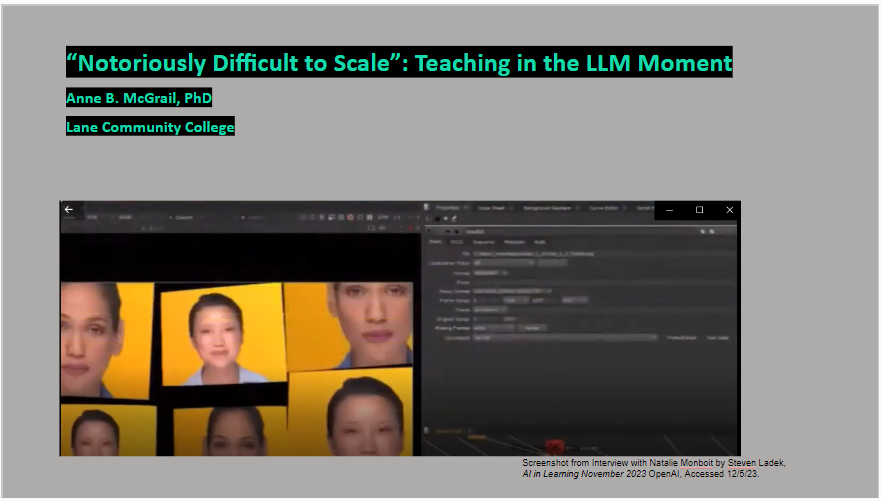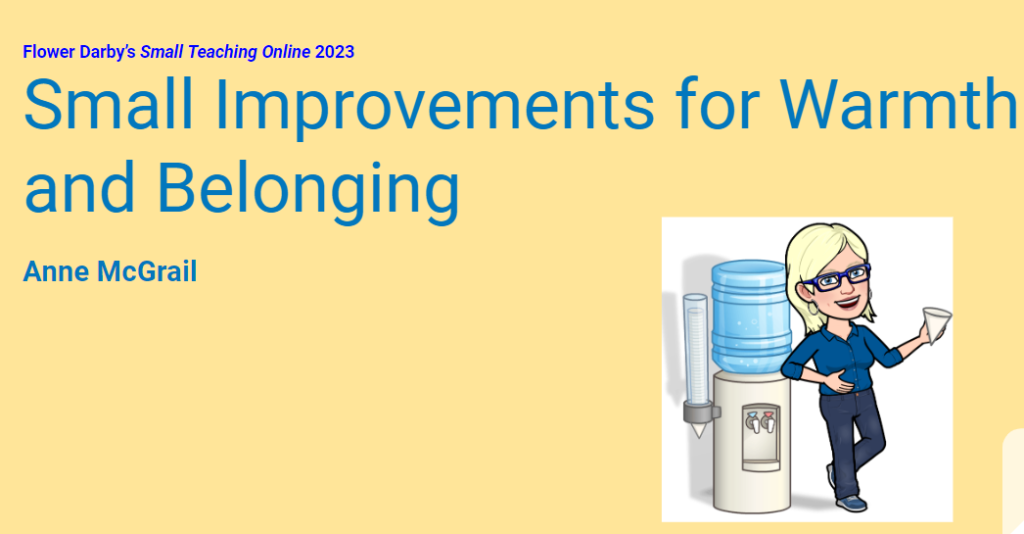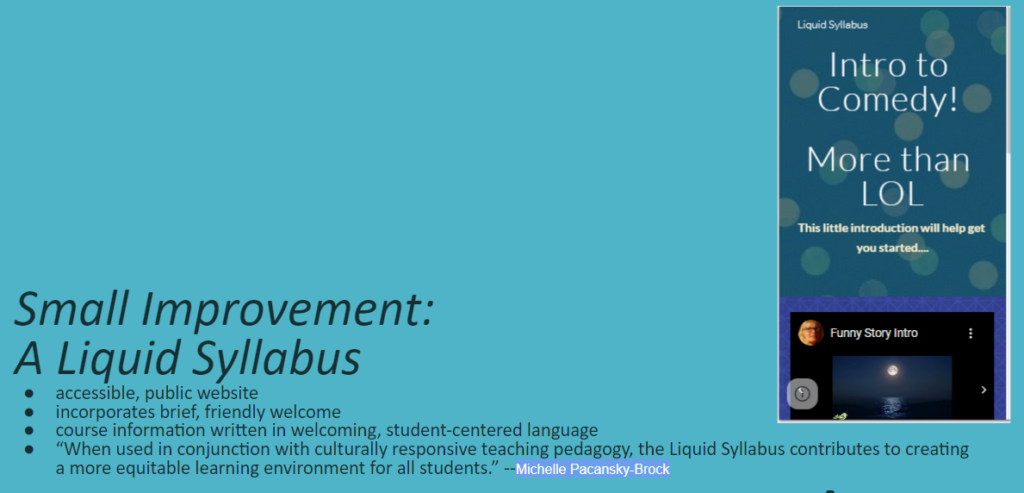Here are my slides from the MLAsession “Teaching Digital Humanities at Community Colleges “


In May I participated in Lane’s Teaching and Learning Symposium with colleagues Aryn and Rachel. This is the third year we have used Flower Darby’s Small Teaching Online as an anchor text for making improvements to our online classes. This year I focused on using an equity lens to improve the warmth and sense of belonging in my online classes. The incremental approach that Darby uses is perfect for community college teaching contexts, because faculty at CCs get few extended opportunities to overhaul our courses or pedagogies. But consistent tinkering produces long-term improvement, I think. My slides are here:


On April 15, I had the pleasure of addressing faculty and librarians at Indian River State College in Fort Pierce, Florida. The Institute for Teaching Excellence there is an impressive facility, and it was a pleasure to be in a room filled with CC faculty who are interested in infusing digital humanities into their curriculum. Thanks to Mia Tignor and all the staff at IRSC for an invigorating discussion.
Here’s my PowerPoint presentation from the talk.
Assignments to inspire DH infusions and redesign at IRSC:

This year I am participating in a Faculty Inquiry Group aimed at improving online pedagogy. We are reading Flower Darby’s Small Teaching Online and working to implement some of Darby’s principles. One of the key principles she encourages is that of student engagement, something I’ve been interested in since 2005 when I worked on a Title III grant whose aim was to improve student engagement.
Darby encourages incremental changes over time to improve online teaching and student engagement. With that in mind I went online and found that California is intentionally improving student engagement in its online STEM courses. It calls this process “Humanizing” an online course. I’m fascinated by this idea and am working to humanize my own humanities class.
The first thing I’ve done is to begin a “Liquid Syllabus” template that I will develop in Fall 2021. More about that here.
My question: how to get online students to read Mary Shelley’s Frankenstein and not just read an online summary of the novel. My solution: assume that students will encounter Spark Notes or some similar website in an era of “No Fear Literature.” Instead of trying to replace Spark Notes encounters, I extend those encounters by leading students back to the original and guiding them through a process of improving upon the notes by observing what is left out of them. Who knows if they still read the whole novel to get there, but my experience has shown me that they do encounter Mary Shelley’s Frankenstein with a fresh appreciation of the language and complexity of the original.
This fall in Oregon, we were trapped inside for 11 days while wildfires destroyed forests and towns all around us. It was a bleak time and I wanted to use the time in some positive way. So I researched poetry readings online to include in my Women Writers class. Each week, students watch a very short poetry reading by an African American poet. Then they complete an “exit ticket” to reflect on what they heard and saw. My modest goal was to open a space in my course for Black Women Poets to speak without my commentary and with a modest apparatus–just enough to prompt my students to reflect but not enough to guide their response.
So far the response has been very positive.
Here’s the file with links to the poetry readings the exit tickets.
ADE Summer Institute Midwest Presentation June 21, 2019
ADE Presentation Writing CC Students into the Digital Landscape
ASSIGNMENT SAMPLES LINKED TO “WHOLE GAME” AND EQUITY APPROACHES:
Play the Whole Game: Using Voyant Tools
Make the Game Worth Playing : Critical Language for Understanding New Media Rhetorics
Work on the Hard Parts: Rhetorical Element Inventories
Play Out of Town: Mapping Emotions in America
Play the Hidden Game: Scientific Controversy and “Alternative Facts”
Learn from the Team: Collaborative Annotations
Learn the Game of Learning: Metacognitive Confidence Self-Checks: